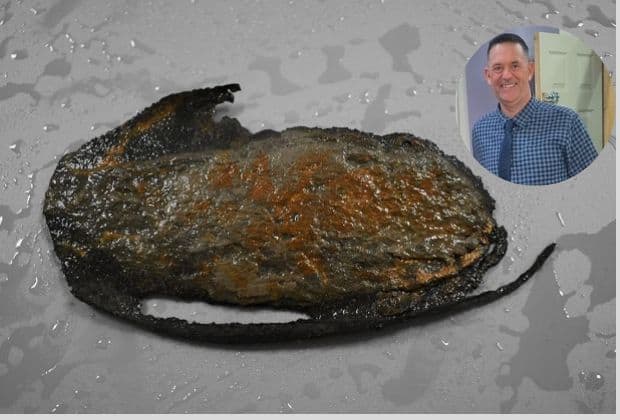
Archaeologist Steve Tomlinson, from Ramsgate, was mudlarking with friend Emily Brown last September when he discovered a 3,000-year-old, late Bronze Age toddler’s shoe in north Kent. The shoe is potentially the oldest found in the British Isles, and also thought to be the smallest Bronze Age shoe found in the world.
Steve explains the extremely rare find and its huge importance:
It was a sunny and clear day on 17th September 2022 when I made a visit to North Kent to go Mudlarking. Mudlarking is a term coined from the 18th and 19th centuries where people would descend on the foreshore rivers, mainly the river Thames, in the mud, looking for items of value in the hope it would make them a livelihood to survive. Nowadays “mudlarks” look for items of historical importance in the hope to fill the gaps of history.
On that day I was in the company of Emily Brown, a professional archaeologist and a very good friend of mine, to check out an area she had not visited before. The day started well, and between us we had a good selection of finds including plenty of pottery sherds from the Roman period, and various small objects like a small piece of Roman tesserae. We had been out for 3 hours scouring the shoreline, and the tide was turning when we hit the last leg of our day. As we made our way along the foreshore, nothing would prepare me for what I was about to stumble upon when I came across what looked like a very old shoe like piece of leather washed up on the mud/shingle, it was around 15 centimetres in length.

I picked it up and I immediately thought it looks like the sole of an old little shoe, I showed it to Emily, and we made a few guesses to its age. Could it be modern? (I doubt it), Could it be Viking (doubt it) Could it be early medieval? (More likely), on further inspections the latter looked very much the case, I was sure I had come across part of a one-piece leather constructed shoe a typical type design popular within the early medieval period something like a turnshoe, but these types of shoes were also known within the Prehistoric period (so who knows). In 2018 I found an Anglo-Saxon shoe sticking out of the mud dating to 942-969AD (after carbon dating), over 1,000 years old so I knew this could be something quite special.

I put the shoe in a bag with a small amount of the water it came from and decided to take it home for closer inspection. Still believing in its importance, my gut instinct told me I needed this to be investigated further so I decided to take a gamble, like I did with the Anglo-Saxon shoe, and sent it off for carbon dating at the SUERC carbon dating unit in East Kilbride Scotland.
After five weeks and what felt like the longest wait ever, the carbon dating result came back to me, I was told that I may need to sit down for this news, as they explained what the carbon dating had revealed, and the date they had given me was just astonishing.
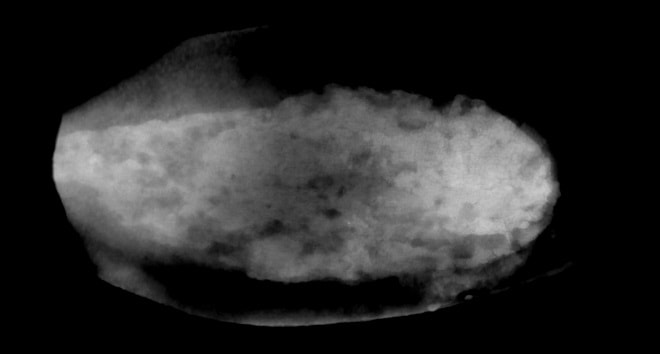
It was carbon dated to 888-781BC, just under 3,000 years old and in the Late Bronze Age period. I called Emily to give her the news and we were both just in deep shock. We could not believe the date they had given us. We spoke about it for over two hours on the phone as we were just running through so many emotions, this shoe is Extremely Rare, realising that this could be not only the oldest shoe found in Kent, but in the British Isles itself, and a very high possibility that this is also the smallest Bronze Age shoe ever discovered in the world. The shoe was for a toddler aged around 2-3 years old and about a size 7.
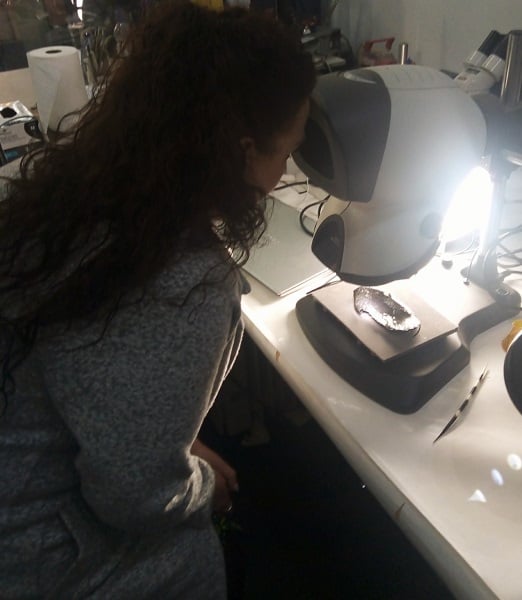
Prehistoric textiles like this rarely survive and the only chance is by finding them in anaerobic conditions such as bogs and mud (away from the air), due to this and the massive national and world importance the carbon dating unit in Scotland asked if I would like to do another carbon dating result to make sure the age was correct. I agreed and it was carbon dated for the second time, it was an agonising Christmas period with many thoughts in my mind, but in mid-January 2023 the second result came back and was carbon dated with the same result.
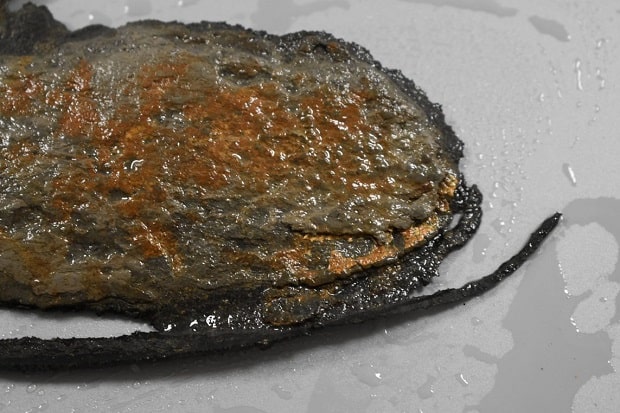
I was so excited, and it still hasn’t quite sunk in, and will certainly open the archaeological history records for ever. I feel that you can find history on our foreshores, but to make history is even more special, I will certainly look forward to the future and what we can all learn from this incredible find. After the professional analysis has taken place it is extremely likely that this will go into the British Museum.

Between September 2022 and January 2023 the news for various reasons had to be kept secret with only a very limited amount of professional people knowing and in trust, but now due to the date being confirmed It’s the right time to spread the news, and it has recently been shown on ITV Meridian news.
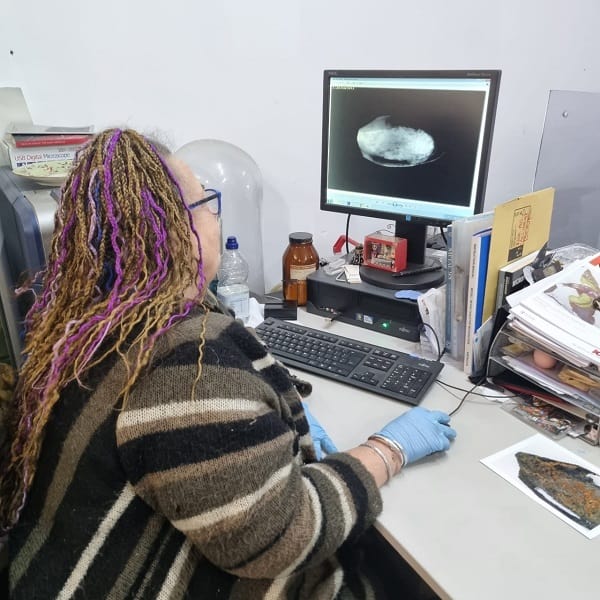
During the last few months the shoe has been conserved by Dana Goodburn Brown (pictured), an accredited Archaeological Conservator at DGB Conservation.
She says: “This late Bronze Age shoe is awaiting further possible scientific investigations and conservation stabilisation treatment. If allowed to dry out with no treatment it would likely to shrink and become very brittle. Further analysis might be to identify the type of animal the leather was made from, or indeed different animal leathers might have been used to construct the child’s shoe. The shoe consists of two, possibly three layers as can be seen by Micro-CT Examination that was carried out by Dr Chris Dunmore at the department of Anthropology and Conservation at Kent University.
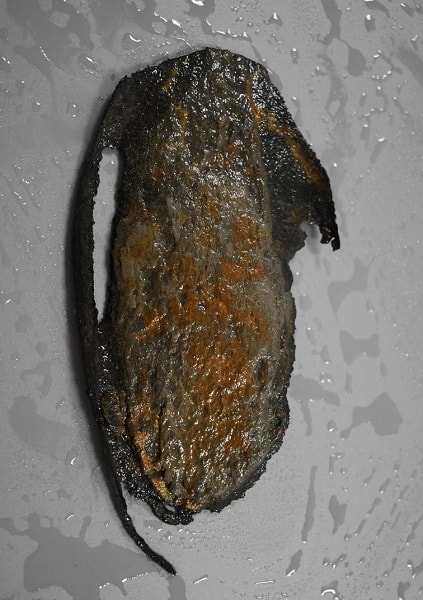
“A further look at the textile impression and pattern of the woven material as seen on the X-radiograph taken by James Elliot at the Canterbury Christchurch Diagnostic Radiography Dept might reveal more information about the textile associated with the shoe. The type of leather might be determined by looking at the pattern of pores for the hair follicles, if visible, and/or DNA analysis. Whether and how the leather was treated to last (tanning), or rawhide might be discovered through chemical analysis. If adhesive was used to stick the layers together, may also be found.
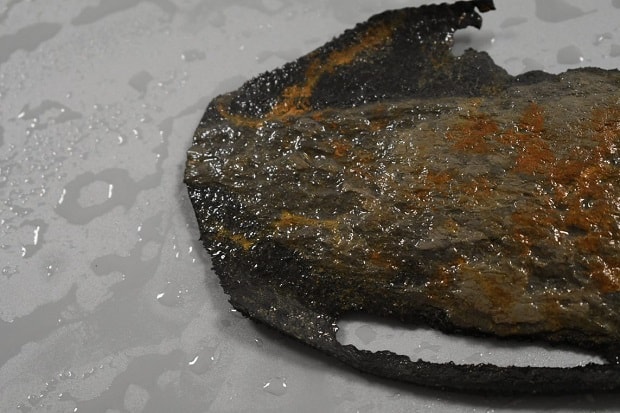
“As a materials scientist and conservator, it is a great privilege to be investigating and conserving this extremely are and unusual foreshore find, giving us a special glimpse into our ancient past, something we know extremely little about, both nationally and on a world scale. It is also a joy to collaborate with the various colleagues in different scientific departments across Kent and beyond, as well as sharing these studies with the finder Steve Tomlinson and Emily Brown who was also present on that amazing day.”

